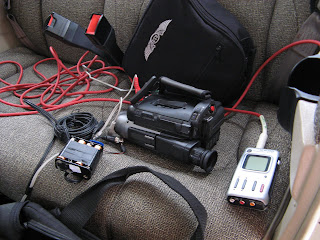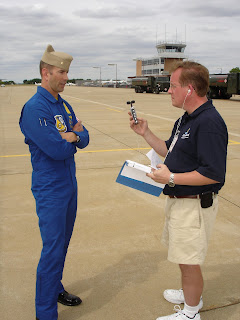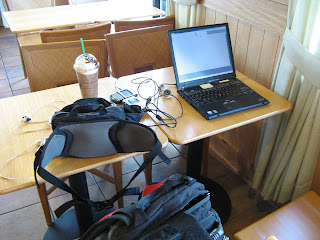
Subscribe to Airspeed through iTunes or your favorite other podcatcher. Or listen online right here by clicking: http://media.libsyn.com/media/airspeed/AirspeedBCPreview2008.mp3. It’s all free!
We continue the annual tradition of calling up Barb Haluszka, the executive director of the Battle Creek Field of Flight Air Show and Balloon Festival.
The show takes place at Battle Creek, Michigan (KBTL). The festivities begin on Wednesday, July 2 this year when the amusement park opens at noon and there’s a scheduled balloon ascent at 6:30 p.m. They start burning avgas and JP-8 in earnest on Friday, July 4 and keep it going for three days with such attractions as the Shockwave Jet Truck, Dacy’s Super Stearman and Wingwalking, Oliver’s DeHavilland Super Chipmunk and Skywriting, Skip Stewart’s Biplane, Herb and Ditto’s Smokin’ T-28, The Aerostars three-ship Yak flight, Bill Stein’s Edge 540, military demonstrations, an F-104, an F-15 demo, a P-51 heritage flight, and The Starfighters F-104 demo team.
And the USAF Thunderbirds are headlining the show!
If you are or were at Sun ‘N Fun this year, you probably heard me doing some of the audio production for Sun ‘N Fun Radio. That took a couple of months of preparation and, although very satisfying, was a lot of work. Today, as we do every year, we talk to someone who really knows the meaning of preparation. Barb Haluszka spearheads all aspects of putting together a major air show and has been running at or near full speed essentially since the 2007 show in preparation for this July.
We caught up with her at her office at the airport to talk about preparations for this year, including her trip to the International Council of Air Shows (or “ICAS”) convention, what goes into selecting performers, interactions with the FAA, and more. Let’s go to the interview.
[Interview audio]
I’ll be at Battle Creek again this year along with photographers and Airspeed team members Tim Reed and Dan McNew and I hope to see you there.
And, if you go to an air show this year, take a moment to think about the preparations that go into them. It may be April out there now but, for many professionals and volunteers, June, July, and August and the rest of the airshow season is just around the corner. Be sure to take a moment to thank every airshow organizer and volunteer you meet!
Check out the show’s website at www.bcballoons.com!
Stay tuned to Airspeed in the coming weeks. Airspeed goes retractable this week as I start my check-out at Flight 101 this week in a Cessna 172RG. Then I’m scheduled to train for my multi-engine rating in a 1957 Apache with Traverse Air at its winter home in Cadillac, Michigan April 19-21. The extended weather forecast for this week looks good for the RG training at Pontiac, but dodgy for Cadillac next weekend. In any case, if I get up, so do you as I plug in the MP3 recorder in the back seat and take you along for the ride.




